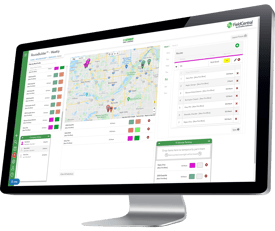
Note: This is the third in a series of blog posts based on Business HindSite’s “How Training Improves Your Bottom Line” presented by David Crary and Ruth King. To watch the entire show, click here.
By David Crary
To get the most out of your training experience you need to first determine who should do the training, what the training should be about, where the training should occur, when the best time is to train, and why you are going to train.
Below are the who, what, where, when, and why that you should nail down before you jump head first into your training experience.
Who?
As discussed in the previous post, having an insider do the training may not be your best bet. Your employees may not accept the insider as a trainer and therefore the training would be pointless.
Having an outsider come in and train or having your employees go out to classes is a better solution. The person training will be an expert in what they are teaching, and while it may cost more than an insider, it is definitely worth the cost.
You can also have your employees attend webinars or seminars presented by experts in the field. They simply join on their computer in the office and watch the presentation. This is a great way to save on travel costs, and as a bonus, most webinars are free!
What?
Determining what to train your staff on is also important. The actual topics will probably vary by position, but there things like how to provide great customer service that everyone in your organization should know.
To find other topics for training, look to your employees. You can either ask them directly what they’d like to learn more about, or observe what issues keep popping up in your business, and put together a training package that addresses the recurring issue.
It’s also important to put together a new hire training package. This doesn’t necessarily have to be job-specific, but instead can be a high-level overview of your business, your values and expectations.
If you have field service software, you might want to also schedule recurring training annually so you can see new features, ask questions, and address any issues you’ve been having with the software.
Where?
One of the most beneficial things I have seen and envy about other field service management businesses are those that have a “training room.” These are rooms that are set up to either bring in a trainer, or to hold equipment/devices to train on.
I do understand, however, that training rooms are not always a possibility. Heck, it never crossed my mind as a landscape management business owner to have a special room just for training! Your next best option is a conference room or training center you can bring your entire crew into to train. You can even use a spare office in your company for employees to watch webinars, read, or team up with other coworkers to train.
A training “place” shows your employees that training is something to be taken seriously and that you are committed to them learning new skills and techniques.
When?
One of the best times to train is during your business’ offseason. You and your team have the time to brush up on skills and get a grasp on any new techniques or equipment you may want to try out for the next season.
If you are a landscape management company not doing snow plowing or holiday lighting and in a colder climate like us here in Minnesota, I strongly suggest you get out and attend trade shows. Trade shows are a great opportunity (especially for business owners) to learn some “best business practices.” There are seminars presented by experts in your industry that you and your team can attend. It is not exactly the same as a one on one training session but I have learned very valuable tips at these events. Everything from the financing and budgeting of my business, to how to get your techs to provide better customer service out in the field.
Why?
Before you start anything, you should determine why you are training. Will it produce more revenue? Help your company provide better customer service? Make you a better owner? Find out the purpose of the training so you know what you would like to get out of it. And then set measurable goals you’d like to achieve with your training initiatives.
You can check out the other post in this series for a more in depth review of why training is important and beneficial here.
When we as business owners get a new idea in our head, we are sometimes guilty of jumping in head first without fully thinking through the training plan. I know I am guilty of this. Figure out the who, what, where, when, and why for your training so you and your team can get the most out of the training and truly benefit from it.
Tune in tomorrow for the next installment of Business HindSite’s “How Training Improves Your Bottom Line: Monitor the Results.”







